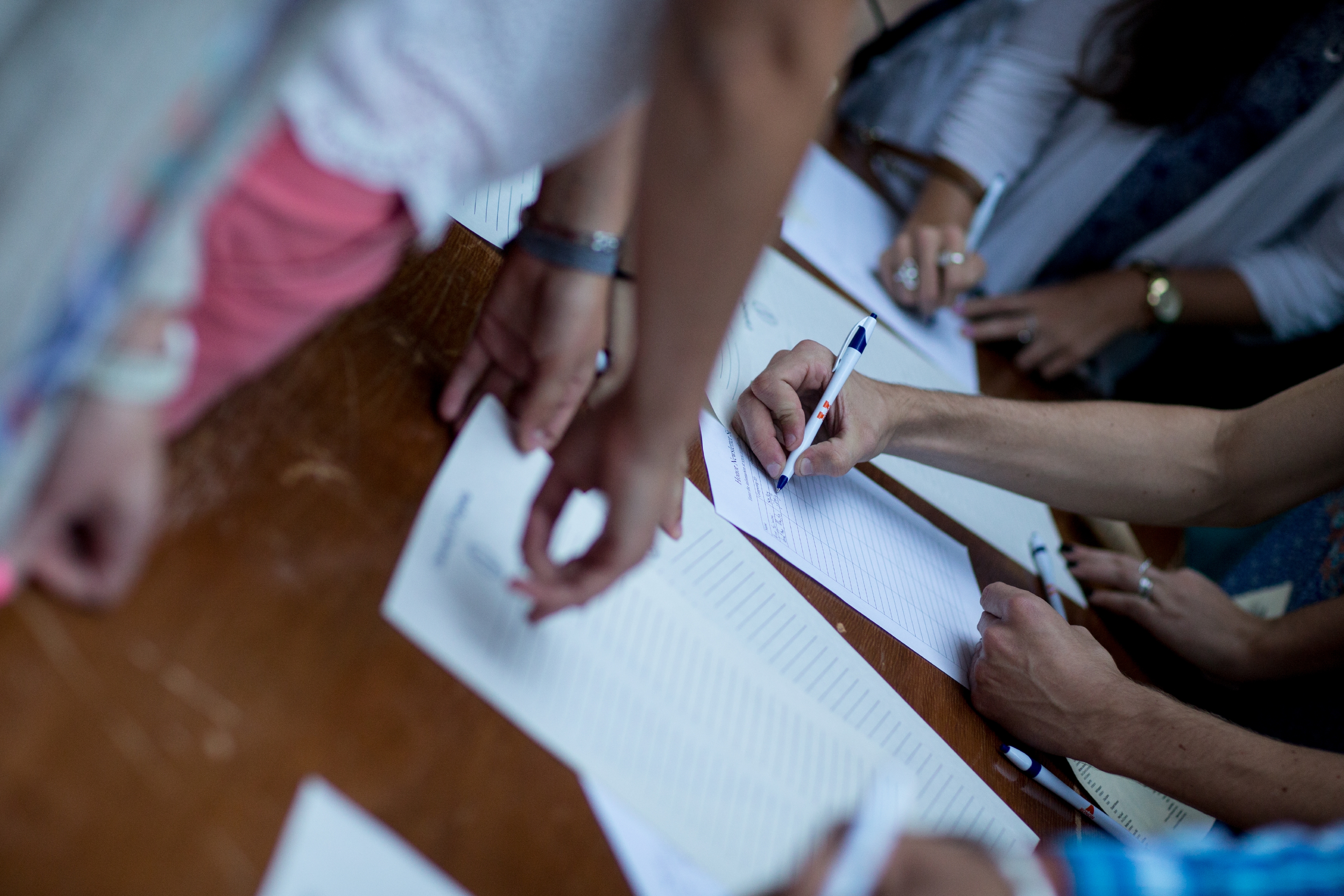In a world where e-signatures and signing by PIN is becoming increasingly common, the act of signing by hand carries symbolic meaning. Legally, e-signatures and handwritten signatures have the same power, but University of Virginia assistant professor Eileen Chou began to suspect that they did not exert the same level of influence over the signer.
She was partially right.
Chou, an assistant professor in the Frank Batten School of Leadership and Public Policy, recently completed a study that measured participants’ levels of honesty relative to how they were asked to sign their name.
Her findings, recently published in the Journal of Experimental Social Psychology, suggest that the majority of e-signatures do not engender the same sense of truth and obligation as a handwritten signature, with one exception: personalized PINs. Numbers that carry some special meaning for the user have almost the same level of moral and psychological power as a handwritten signature.
In order to test how e-signatures might diminish the implied endorsement or agreement made when signing something, Chou devised a study to measure the levels of dishonesty in relation to six types of signature conditions: checkbox, random PIN, typed name, birthday-related PIN, self-generated PIN and handwritten signatures.
“We asked, ‘How do people perceive electronic signatures, how do people feel when they sign electronic signatures, and how would that impact their subsequent behaviors?’” she said.
To test the importance of signing by hand, she designed a series of seven tests that would give participants an opportunity to cheat if they wanted to, and also led them to believe they could do so without being caught.
“We found that when an e-signature requires a greater level of self-presence, it works better,” Chou said.
When study participants were allowed to choose their own PIN using numbers that were important to them, they tended to be more honest than those who used other forms of e-signatures.
In one test, 312 participants were asked to read four short passages and report how many seconds it took them to complete each one. They were also told that their compensation for participation would increase depending on how fast they read each passage. Unbeknownst to them, the computer program providing the passages was also timing how long it took them to read and click through. Before beginning the task, they were asked to provide a signature affirming that they would report their results honestly.
Cheating among participants who signed using a self-generated PIN was an average of 9.1 percent less frequent than those who used check-boxes, computer generated PINs or typed their names out. The results of this test also showed that while the cheating rate among those who used handwritten signatures was lower (58 percent), this difference was not statistically significant from the 69.8 percent of participants who signed with the self-generated PINs.
Including the passage-reading tests, Chou conducted a total of five studies testing different e-signature types and different cheating tasks. The results of all five tests consistently showed a link between e-signatures and dishonesty.
“There’s a positive association, but it’s not quite linear,” Chou said. “We see that computer-generated PINs have basically no impact at all on curbing dishonesty. The birthday PIN also did not have that much of impact, but the PIN that was really meaningful tended to curb cheating behavior.”
Chou suggests that the self-generated PIN was able to partially bridge the gap between other types of e-signatures and signing by hand because it requires more agency and intimacy, both dimensions of self-presence. Still, she believes more research needs to be done to understand what we might be giving up by foregoing the handwritten signature.
“The take-home message for this research is not that we should revert back to signing with a pen and forego technology altogether,” she said.
Instead, Chou wants more people to think about when and where e-signatures are appropriate. Her research also found that signing by hand with a stylus – such as a mouse or digital pen – carried the same weight of self-presence as signing with a physical pen on paper.
This similarity could be crucial for organizations like the IRS that now rely heavily on e-signatures to affirm honest self-reporting and binding legal documentation. Other groups that traffic in large numbers of legal documents may want to consider the value of stylus and personalized PIN options.
“We have to think about where technology is taking us and whether or not there is a gap between what we’re doing and how we perceive what we’re doing, how we psychologically interpret those behaviors,” she said.
Media Contact
Article Information
October 8, 2015
/content/what-s-name-professor-studies-psychological-power-signature

